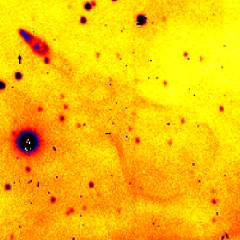About 2 million years ago, a star system with two massive stars broke apart when one of the two exploded as a supernova. Its companion had already gone supernova and become a pulsar. When the second star exploded, the binary pair was torn apart and its two members flew off in different directions at high speed. Today, a distance of 23° lies between them, equalling a physical separation of 3,800 light-years.
A group of astronomers led by Wouter H. T. Vlemmings (Cornell University) discovered that pulsars B2020+21 and B2021+51 are probably related when they studied high-precision positional data produced by very-long-baseline radio interferometry.
“We had this group of 24 pulsars for which we have very accurate positions, motions on the sky, and distances,” says Vlemmings. “Most of these measurements came from radio interferometry over about a year of observations.”
As the astronomers reconstruct the breakup, they propose that before either star went supernova, they each weighed approximately 9 solar masses and were separated by 2 to 4 astronomical units (1 AU is the Earth-Sun distance). The more massive of the two stars exploded first and became a neutron star and pulsar. Although the binary system was jolted by the explosion, the pair remained gravitationally bound to each other.
Within half a million years, however, the second star also exploded in a messy, one-sided supernova blast that disrupted the system. The asymmetric explosion gave the new-born neutron star a kick that sent it flying closely by the other neutron star. Like a pair of whirling figure skaters who suddenly let go their hands, the two pulsars flew off into the galaxy on nearly opposing trajectories.
In their paper, published in Astrophysical Journal (July 20, 2004), the astronomers note that two other pulsars, B1857-26 and B2016+28, also likely originated in the Cygnus superbubble, where each may have belonged to binary systems. (Their hypothesized companion stars, however, have not yet been identified.)
“We are now using radio observations to extend the number of pulsars with accurate positional measurements,” says Vlemmings. “In our expanded sample we hope to tie together not just pulsar pairs, but also pairs with a pulsar and an ordinary star. These will let us study supernova explosions and what happens in places like the Cygnus superbubble, where massive stars are born.”










